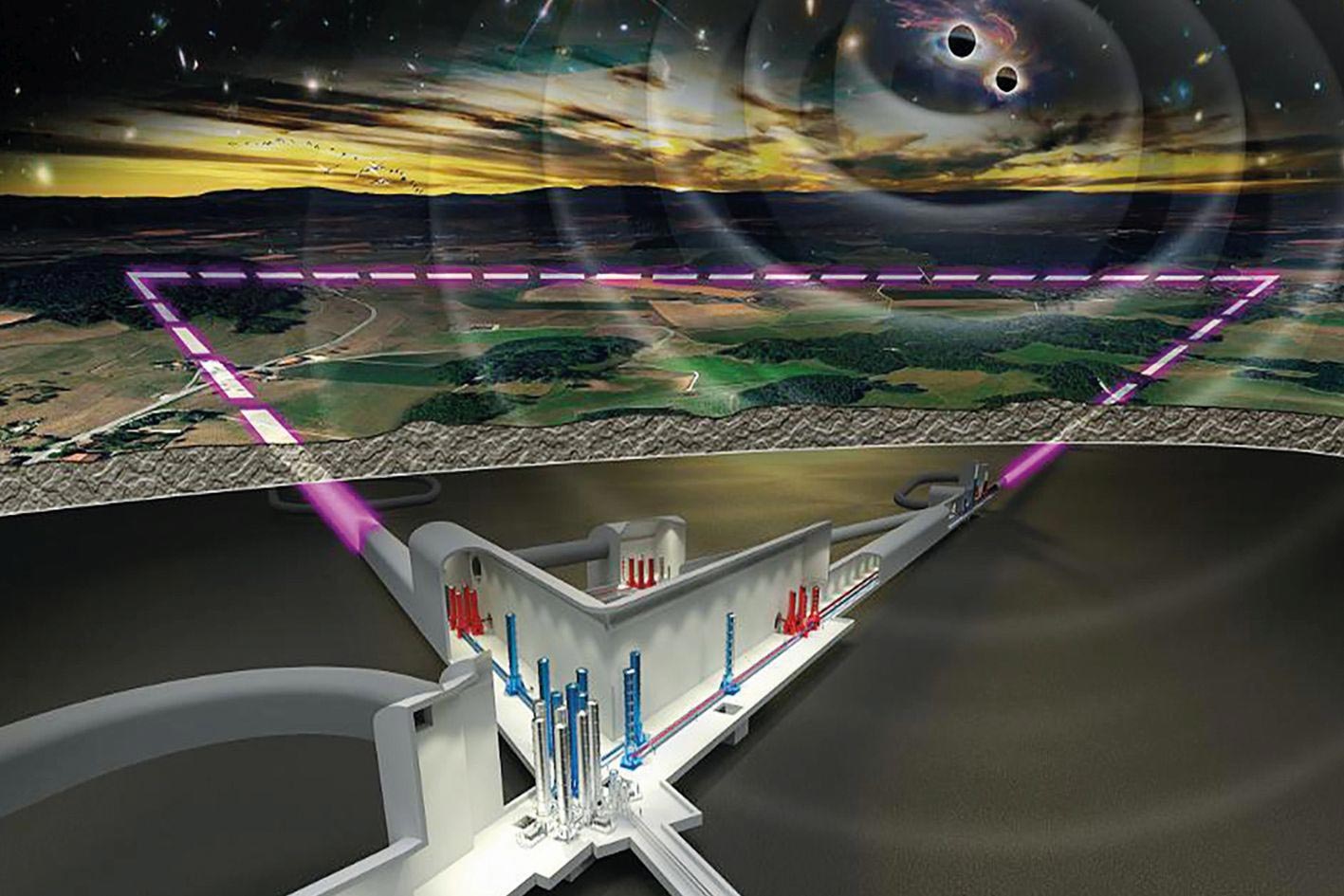The Einstein Telescope is being built around 250 meters underground. With interferometers in the three tunnels, each ten kilometers long, it will measure collisions of black holes in the early universe. Credit: NIKHEF
The Einstein Telescope, set to begin observations in 2035, will expand our capability to detect 
A prototype for the highly stable holmium-doped fiber amplifier is currently being developed at the Fraunhofer ILT. The new laser technology can potentially also be used in other application areas, e.g. in quantum technology or medical technology. Credit: Fraunhofer ILT, Aachen, Germany
Gravitational Wave Detectors Open a New Chapter in Astronomy
Thanks to gravitational wave detectors, we already know more about the collisions of neutron stars. By galactic standards, these are very fast processes. In the past, if we were very lucky, we could register gamma-ray bursts which lasted less than a second. When black holes collide, the signal that can be measured with current gravitational wave detectors is very short. The signal of the first gravitational wave measured in 2015 was just over 0.2 seconds long. Such waves are created when ultra-heavy objects orbit each other in the universe and then collide.
The signal detected in summer 2017 was 100 seconds long, so it was immediately clear that this must be something new. Shortly after the gravitational signal stopped, the gamma-ray burst was recorded; later the afterglow of the explosion was observed in various wavelength ranges, and traces of heavy elements such as gold and platinum were detected. The event was identified as a collision of two neutron stars. The simultaneous observation of gravitational waves and electromagnetic signals opened a new chapter in observational astronomy. “In fact, the optical signal was decisive in finding the star in the sky,” explains astrophysicist Stahl.

Laboratory setup of the thulium-doped fiber amplifier for the Einstein Telescope. Credit: Fraunhofer ILT, Aachen, Germany
Our “Ears” to the Universe
For centuries, astronomy was limited to observations of visible radiation. With a better understanding of the electromagnetic spectrum, astronomers added many new observation methods, detected radio waves and significantly expanded mankind’s knowledge through calculations and simulations.
When Albert Einstein postulated his general theory of relativity a good hundred years ago, he also came up with the idea that there could be waves that have nothing to do with the electromagnetic spectrum. Similar to a sound wave, they were supposed to make a test specimen at a great distance “wobble” a little. Large accelerated masses should send such waves through space. On Earth, however, the wobble caused by gravitational waves is so weak that the movement is much smaller than the diameter of an











/https://tf-cmsv2-smithsonianmag-media.s3.amazonaws.com/filer_public/34/31/3431771d-41e2-4f97-aed2-c5f1df5295da/gettyimages-1441066266_web.jpg)








Discussion about this post